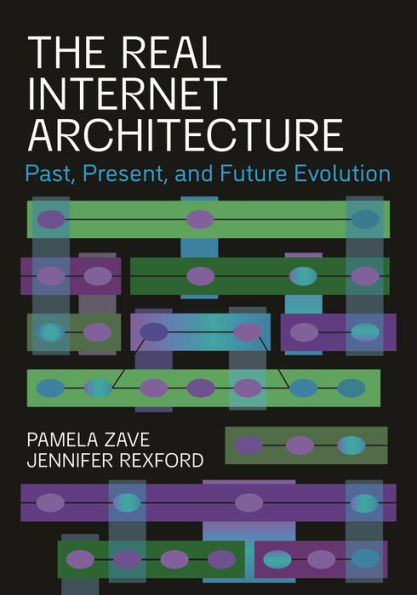A new way to understand the architecture of today’s Internet, based on an innovative general model of network architecture that is rigorous, realistic, and modular
This book meets the long-standing need for an explanation of how the Internet's architecture has evolved since its creation to support an ever-broader range of the world's communication needs. The authors introduce a new model of network architecture that exploits a powerful form of modularity to provide lucid, insightful descriptions of complex structures, functions, and behaviors in today’s Internet. Countering the idea that the Internet’s architecture is “ossified” or rigid, this model—which is presented through hundreds of examples rather than mathematical notation—encompasses the Internet’s original or “classic” architecture, its current architecture, and its possible future architectures.
For practitioners, the book offers a precise and realistic approach to comparing design alternatives and guiding the ongoing evolution of their applications, technologies, and security practices. For educators and students, the book presents patterns that recur in many variations and in many places in the Internet ecosystem. Each pattern tells a compelling story, with a common problem to be solved and a range of solutions for solving it. For researchers, the book suggests many directions for future research that exploit modularity to simplify, optimize, and verify network implementations without loss of functionality or flexibility.
A new way to understand the architecture of today’s Internet, based on an innovative general model of network architecture that is rigorous, realistic, and modular
This book meets the long-standing need for an explanation of how the Internet's architecture has evolved since its creation to support an ever-broader range of the world's communication needs. The authors introduce a new model of network architecture that exploits a powerful form of modularity to provide lucid, insightful descriptions of complex structures, functions, and behaviors in today’s Internet. Countering the idea that the Internet’s architecture is “ossified” or rigid, this model—which is presented through hundreds of examples rather than mathematical notation—encompasses the Internet’s original or “classic” architecture, its current architecture, and its possible future architectures.
For practitioners, the book offers a precise and realistic approach to comparing design alternatives and guiding the ongoing evolution of their applications, technologies, and security practices. For educators and students, the book presents patterns that recur in many variations and in many places in the Internet ecosystem. Each pattern tells a compelling story, with a common problem to be solved and a range of solutions for solving it. For researchers, the book suggests many directions for future research that exploit modularity to simplify, optimize, and verify network implementations without loss of functionality or flexibility.

The Real Internet Architecture: Past, Present, and Future Evolution
256
The Real Internet Architecture: Past, Present, and Future Evolution
256Related collections and offers

Product Details
| ISBN-13: | 9780691261850 |
|---|---|
| Publisher: | Princeton University Press |
| Publication date: | 06/25/2024 |
| Sold by: | Barnes & Noble |
| Format: | eBook |
| Pages: | 256 |
| File size: | 7 MB |
